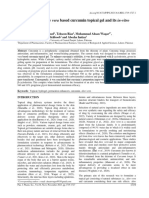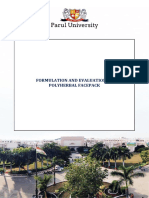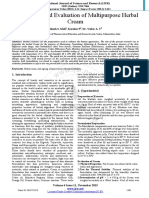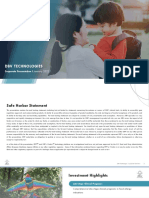0% found this document useful (0 votes)
64 views40 pagesIntroduction
The document is a report on the preparation and evaluation of a herbal gel containing Aloe vera, Neem, Tulsi, and Turmeric, aimed at providing antimicrobial properties for topical treatment. The project was conducted by Poorti Prajapati under the supervision of Mr. Dipesh at Sunder Deep Pharmacy College as part of the Bachelor of Pharmacy program. The study highlights the formulation process, evaluation of physicochemical parameters, and the potential effectiveness of the gel for treating skin conditions like acne and dermatitis.
Uploaded by
priyachaudhary2552Copyright
© © All Rights Reserved
We take content rights seriously. If you suspect this is your content, claim it here.
Available Formats
Download as DOCX, PDF, TXT or read online on Scribd
0% found this document useful (0 votes)
64 views40 pagesIntroduction
The document is a report on the preparation and evaluation of a herbal gel containing Aloe vera, Neem, Tulsi, and Turmeric, aimed at providing antimicrobial properties for topical treatment. The project was conducted by Poorti Prajapati under the supervision of Mr. Dipesh at Sunder Deep Pharmacy College as part of the Bachelor of Pharmacy program. The study highlights the formulation process, evaluation of physicochemical parameters, and the potential effectiveness of the gel for treating skin conditions like acne and dermatitis.
Uploaded by
priyachaudhary2552Copyright
© © All Rights Reserved
We take content rights seriously. If you suspect this is your content, claim it here.
Available Formats
Download as DOCX, PDF, TXT or read online on Scribd
/ 40























































































